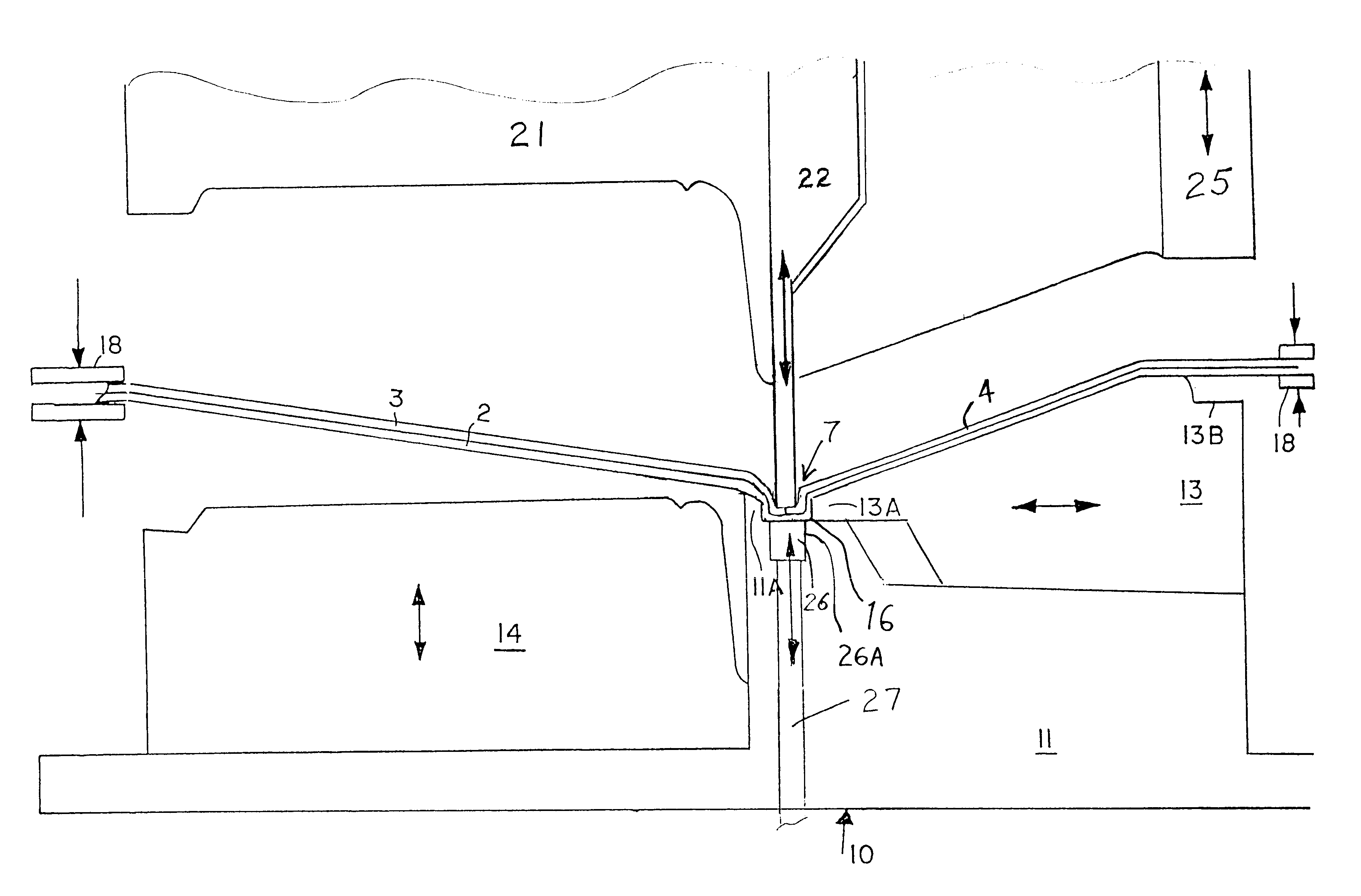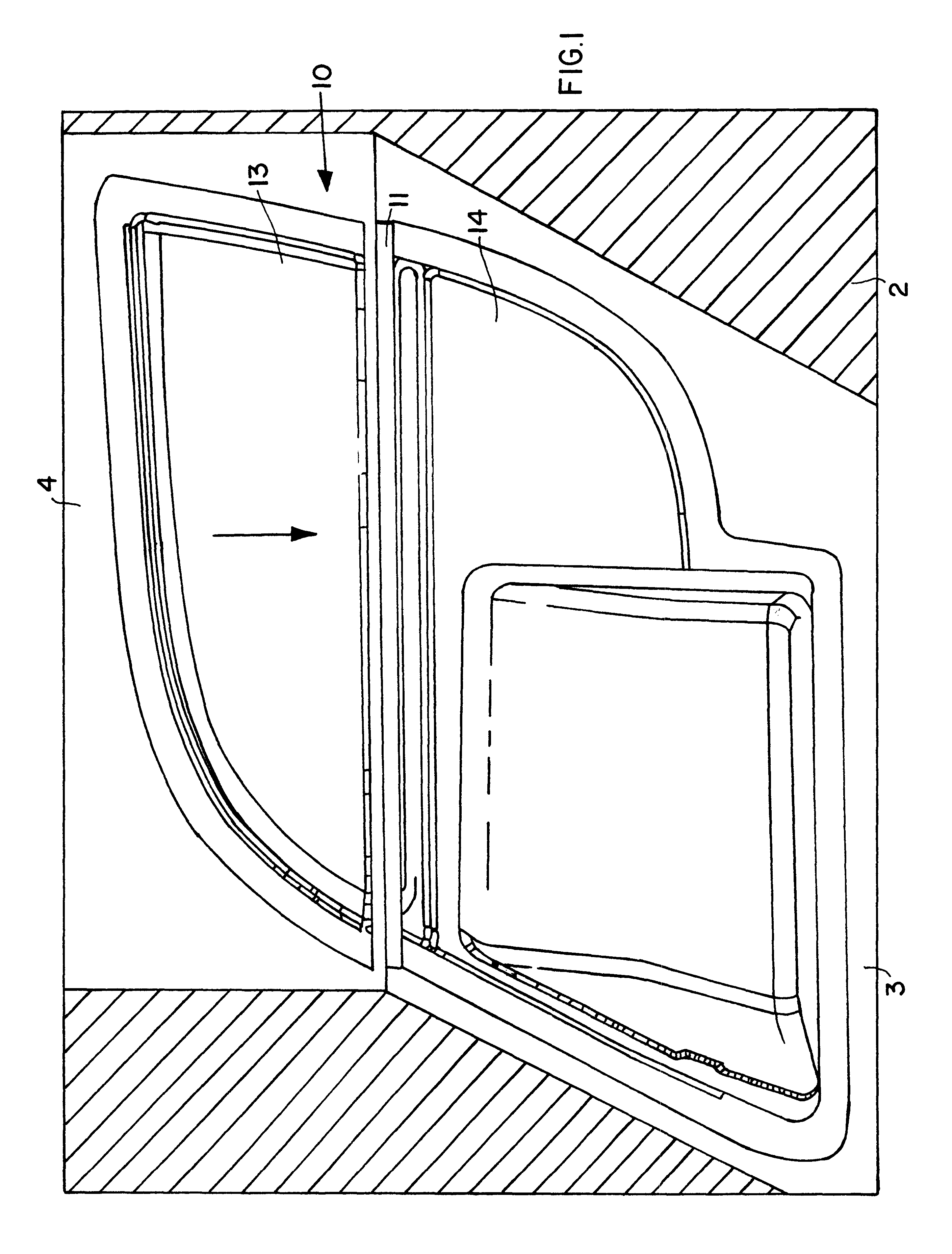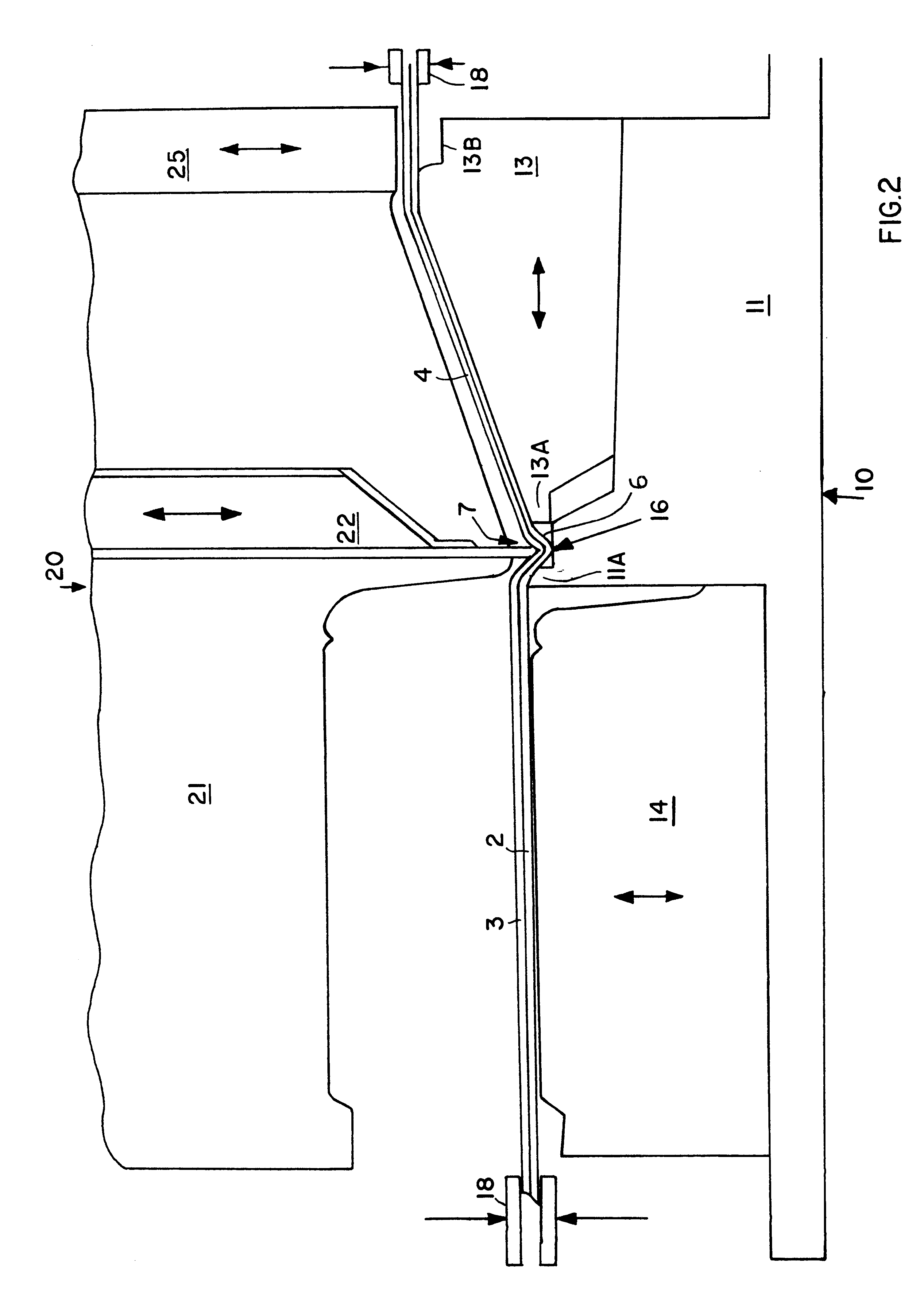Method and apparatus for producing a precise joint between two cover materials for a trim component
a technology of cover materials and trim components, applied in the direction of rigid containers, superstructure subunits, monocoque constructions, etc., can solve the problems of increased costs, higher rejection rate, and increased likelihood of defective parts
- Summary
- Abstract
- Description
- Claims
- Application Information
AI Technical Summary
Benefits of technology
Problems solved by technology
Method used
Image
Examples
Embodiment Construction
The original invention, which is the subject matter of the above referenced parent application Ser. No. 09 / 176,356, now U.S. Pat. No. 6,212,157, will first be described in connection with FIGS. 1 to 4. An understanding thereof is essential to an understanding of the present further improved method and apparatus of the present Continuation-In-Part application, because the present improved method and apparatus incorporate all of the features of the original invention, and further incorporate certain improvements, which will be additionally described in connection with FIGS. 5 to 10 below.
With reference to FIGS. 1 and 4, an example of a trim component 1 according to the invention is an interior door trim panel for an automobile, comprising a substrate 2 with two different cover sheets, namely a cover film 3 and a cover cloth 4, applied thereon. The two cover sheets, namely the film 3 and the cloth 4 are not pre-spliced together, but rather come together with their respective bordering ...
PUM
| Property | Measurement | Unit |
|---|---|---|
| angle | aaaaa | aaaaa |
| gap width | aaaaa | aaaaa |
| angle | aaaaa | aaaaa |
Abstract
Description
Claims
Application Information
 Login to View More
Login to View More - R&D
- Intellectual Property
- Life Sciences
- Materials
- Tech Scout
- Unparalleled Data Quality
- Higher Quality Content
- 60% Fewer Hallucinations
Browse by: Latest US Patents, China's latest patents, Technical Efficacy Thesaurus, Application Domain, Technology Topic, Popular Technical Reports.
© 2025 PatSnap. All rights reserved.Legal|Privacy policy|Modern Slavery Act Transparency Statement|Sitemap|About US| Contact US: help@patsnap.com



